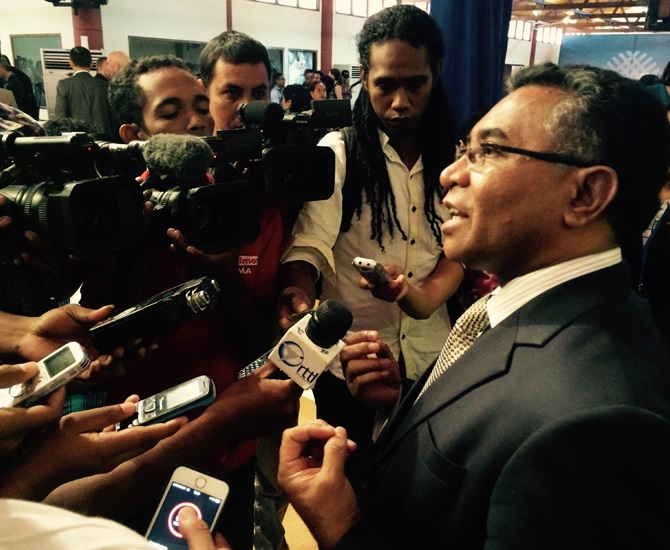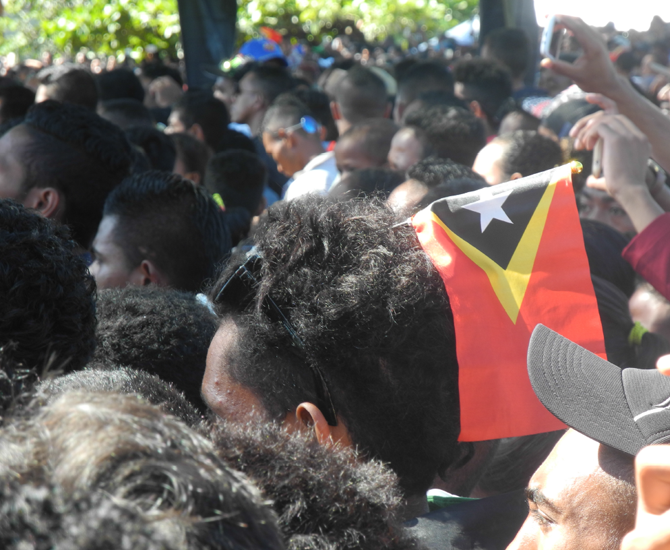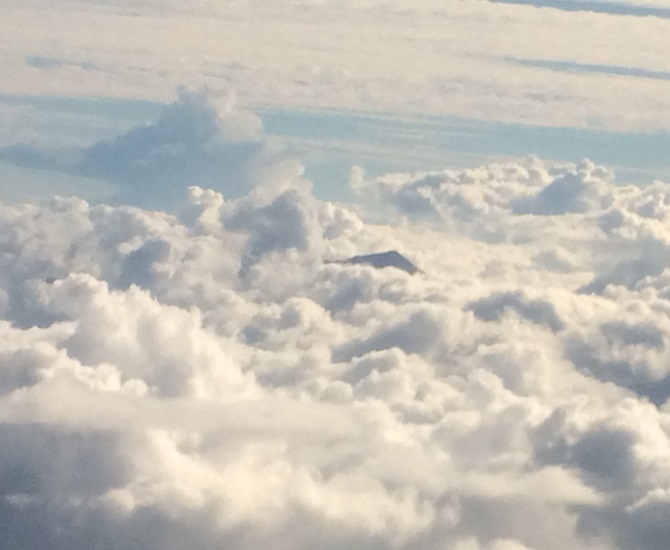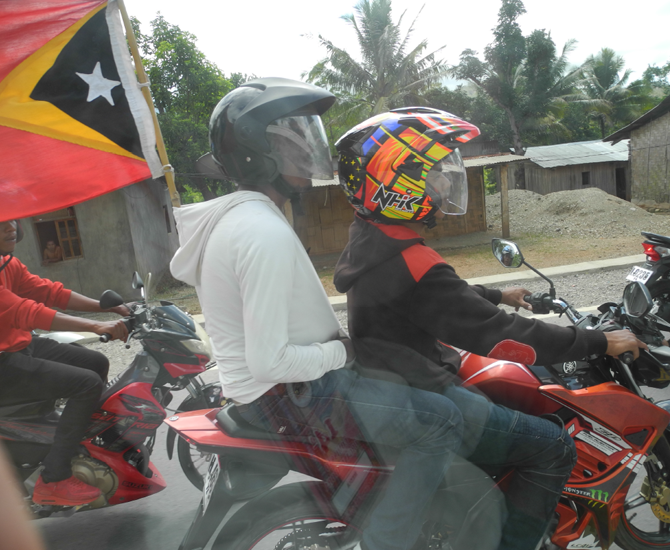-
Thirsty visitors to Timor-Leste might expect the dominant beer will be Indonesia's top-selling drop, Bintang.
Yet the Dutch brewing giant Heineken is building a $US40 million brewery and soft drink plant in Dili (even though it also owns Bintang). It is the first time a global brand has set up as a manufacturer in Timor and is a milestone for a poor country trying to diversify into non-oil investments.
" While the economic outlook for Timor-Leste remains bright, the country … needs to diversify the economy."
Shane Rosenthal, ABD Timor-Leste directorThe output is aimed at a domestic market which is relatively small at about 1.2 million people but is growing.
Meanwhile, the Australian-owned $US520 million TL Cement plant and renewable-power plant is being built at Baucau east of Dili, and the Timor-Leste government has a $US290 million public-private partnership with a French company to build a new port at Tibar about 10 kilometers west of the capital.
These are all welcome signs of the Timorese economy slowly evolving. Timor has made much progress since the tumultuous end to 24 years of Indonesian occupation 1999, followed by the rapture of independence in 2002.
But the country still faces a unique economic challenge, including a sovereign-wealth fund containing about $US16 billion being whittled down over time.
The aim was to spend no more than 3 per cent of the wealth fund annually, making the fund self-sustaining based on its investment income and the value of known reserves. But budget drawdowns have exceeded this target as the government pursues national development through spending on badly needed infrastructure.
Revenue is a central challenge for whichever government is elected in 2017. Oil revenue peaked at $US3.72 billion in 2012 and is now down to about $US719 million, partly due to falls in global oil prices in recent years. Production from existing fields is forecast to end in the early 2020s and the Petroleum Fund might be depleted by 2030.
Timor hopes new oil wells will be developed. It is also looking to resolve a long-running dispute with Australia on maritime boundaries, thereby gaining a bigger share of new oil and gas reserves such as Woodside Petroleum's Greater Sunrise field.
A positive outcome there however is still too limited. In an interview with BlueNotes, Timor-Leste Prime Minister Rui Maria de Araújo stressed his country had to "move swiftly and soon towards economic diversification" regardless of the maritime boundary dispute.
"We had to strike the right balance between preserving the longevity of the fund and also investing in effective and efficient assets within the country in order to support the economic diversification policy that," he said.
{CF_IMAGE}
"It's all very well to say … because we want to preserve the value of the fund for the future, it would be cautious not to take out investment for infrastructure.”
“But on the other hand, if you don’t invest in infrastructure,” he continued, “The economic diversification process will slow down."
"We're trying hard to make sure the funds are being accessed through our state budget … are for things like roads, bridges, ports, airports … those basic infrastructure components of economic diversification."
POLICY CHALLENGES
Yet the Asian Development Bank noted a divergence between policy and practice in a report published last year, "Growing the Non-Oil Economy: A Private Sector assessment for Timor-Leste".
The government has ambitious plans for the multi-billion dollar Tasi Mane project on the south coast, including a liquefied LNG plant and a refinery-petrochemical complex. The related work includes a logistics base, a new seaport and airport, plus roads and bridges.
According to the ADB, the 2015 Budget cut the allocated spending on the Tasi Mane project to $US433 million between 2015 and 2019, but it still accounted for about 14 per cent of the country's total capital spending in that period.
"As the project is focused almost exclusively on the petroleum industry, it is unhelpful in addressing the challenge of diversifying the economy, away from oil dependency,” the ADB wrote. “The industry’s capital-intensive nature also means that few domestic jobs will likely be created."
"Moreover, because a comprehensive project cost–benefit analysis has not been prepared, it is unclear what net benefits will actually be realized."
There are further hurdles for the Tasi Mane plan, which envisages natural gas being piped ashore along deep (and rough) seas. The Greater Sunrise partners, led by Australia's Woodside, have a stated preference for a floating offshore LNG plant.
Similar queries have been raised over plans for the new PPP port near Dili, and whether it would make more economic sense to redevelop the existing port in the centre of the capital.
ALTERNATIVE SCENARIOS
Since 2009, the Australian government has been funding a group of academics at Monash University to study economic development issues in Timor. One of their number, economist Brett Inder, argues oil produces few spill-over economic benefits apart from royalties and taxes.
Modelling by Inder and his colleagues finds a $US2 billion increase in petroleum revenues would reduce poverty from 50 per cent to 45 per cent; while a $US200 million increase in agricultural production reduced poverty from 50 per cent to 30 per cent.
Inder cites the real-life example of a local business on the outskirts of Dili which buys and processes salt, meaning hundreds of farmers each earn several-hundred dollars a year.
The salt enterprise is built around agriculture, and is a step towards manufacturing, but is harder for governments to structure compared to attracting foreign investment.
He argues low productivity is the core reason for poverty and output can be greatly increased through farmers learning and learning how to learn. Growers of coffee, Timor's main export cash crop, are reluctant to replant and prune both coffee and shade trees and there is there is little on-farm investment.
{CF_IMAGE}
THE TRAP OF SUBSISTENCE
Annual food shortages are common in Timor-Leste, as is early childhood malnutrition. The outlook has been worsened by the El Niño phenomenon which has only just ended after producing drought conditions in some Timorese districts.
Nevertheless, the ABD has forecast GDP growth will reach 4.5 per cent in this year, rising to 5.5 per cent in 2017.
“While the economic outlook for Timor-Leste remains bright, the country is facing declining oil royalties and this highlights the need to diversify the economy,” according to the ABD's country director in Timor-Leste, Shane Rosenthal.
{CF_IMAGE}
“Timor-Leste’s growing youth population brings about a real opportunity to raise long-term growth prospects by investing in human capital and encouraging broader participation in the labour market.”
Apart from being a young country, Timor is also youthful with some 60 per cent of its 1.2 million people aged less than 25. Since Independence, infant and child mortality rates have almost halved, but there is still much poverty in the rural districts that rely on subsistence agriculture.
PROPERTY RIGHTS, LAND RIGHTS
One of the problems in developing agriculture is a tangled web of land ownership. There are old Portuguese land titles, Indonesian land titles, community based customary land systems and long-term occupation. Many land titles were destroyed in the violence following the independence referendum in 1999.
{CF_IMAGE}
ANZ’s CEO in Timor-Leste, told a recent investment conference in Dili a transitional Land Reform Act presented to the Council of Ministers was still a "work in progress" but it was increasingly easy to do business on many fronts.
These include improved company registration, continuing work on a company code, fiscal reforms, increased investment in education, a new trade and investment authority, the launch of an electronic-payments platform for all banks and a planned interchange between financial institutions in 2016/17.
"Like anywhere with opportunities like those we see in Timor-Leste, there are challenges to be aware of, and as always, solutions to be tailored," Dennis says. "Timor-Leste is a young nation, and in the midst of a number of critical enabling reforms which will improve the attractiveness to do business in Timor Leste. .”
“You need to come here with your eyes wide open. You need a good local lawyer, a good local accountant, assistance with language if that’s a barrier, and so forth.”
"These are not unique challenges to Timor Leste, but they are nonetheless things you should consider. With the right risk appetite, there are many prospects for those willing to turn these challenges into opportunities. We certainly have, and we’ve seen our business grow consistently over time."
THE OPPORTUNITY
An Australian business leader, Peter McMullin, has been visiting Dili since 2002 and helped establish the Chamber of Commerce and Industry of Timor-Leste. He says the investment conference was focused on more immediate opportunities rather than Tase Mane.
McMulllin has seen a "remarkable" transformation since Independence, even though more work is needed to overcome "deficits" in areas such as health and education.
"There're quite a lot of things happening," he told Blue Notes. "Ten years ago, you couldn't have imagined a conference like this happening, there was no story to tell."
"It's a developing country making some of the right decisions. There's a lot of things that are going to take time to resolve, but they are doing them and they are committed. You can’t say that about every developing country."
One strength for Australian businesses are the people-to-people links of the Timorese diaspora in centres like Darwin, Melbourne and Perth. Indeed, Dili is only 80 minutes' flying time away from Darwin, with the Tiwi Islands in between.
For example, a Timorese of Chinese descent, Jape Kong Su, came to Australia and founded a family-owned commercial property business in Darwin in 1976. After success in the Top End, the Jape group developed the Timor Plaza In Dili, an important landmark in the rebuilding of the capital, and has a big tourism project on the drawing board.
Tourism has strong potential, although the support services are under-developed and airfares are relatively expensive (via Darwin, Bali and Singapore).
There is a cult sporting event in the Tour de Timor, an international mountain-bike race, and a Dili marathon. There is also world-class diving and snorkeling.
THE PEOPLE
For this first-time visitor, the attraction of Timor-Leste lay mostly with the people. They are friendly, proud of being independent and largely supportive of the government's direction, but desperately keen to have paying jobs.
At first, flying into Dili feels like approaching an extension of Darwin and the Top End. Then the island appeared, through clouds, with the odd mountain peak poking through. The runway seems to start just about where the beach ends.
{CF_IMAGE}
Downtown, Dili buzzes with scooters and motorbikes but it shuts up fairly early of an evening, The flashest buildings, like the Presidential palace, were built by Chinese money but the city is mostly low-rise, apart from a new multi-storey headquarters for the Finance ministry.
{CF_IMAGE}
The vibe is more rural Indonesia or the Malaysian state of Sabah than a tourist destination like Bali. There are pointers to past turbulence, like the statute of Christ ("Cristo Rei") built on a point west of Dili. It was built in the Suharto-era and is 27 metres tall (symbolising Timor then being the 27th province of Indonesia). The statue is looking past Dili, across the sea towards Jakarta.
Timor-Leste feels different, even a bit mysterious. It’s a crossroads between Southeast Asia and Melanesia, mixed with a Portuguese presence dating from 1515. They people are strongly Catholic, with an underlying strain of indigenous animism. But there is familiarity, too, with so many Timorese having ties to Australia – through family, work and study.
This visitor wants to go back, even though it can be blazing hot getting around Dili (where a suit and tie is expected for high-level meetings).
But you can regroup at the end of the day with a cold beer (or soft drink) and gaze across the Timor Sea at the brief but fiery sunset.
There's much to be done, but good signs for the local economy.
Mark Skulley is one of Australia’s most-respected business journalists, a veteran of more than two decades at Fairfax Media including The Australian Financial Review.
All photos courtesy of Mark Skulley
CORRECTION: an earlier version of this story incorrectly stated Timor Leste sits astride the Wallace Line.
The views and opinions expressed in this communication are those of the author and may not necessarily state or reflect those of ANZ.
-
-
-
-
-
-
EDITOR'S PICKS
-
In a dark room somewhere in North America, just a shade above zero degrees kelvin (about the same temperature as interstellar space) lies the embryonic form of a disruptor of epic proportions; a device which may be recorded in history as the first commercial leap into the world of quantum computing: the D-Wave One.
13 May 2016 -
Not all bank technology is cutting edge. While banks actively pursue fintech, cloud solutions and core rebuilds, some financial services technology dates back to when the Concorde took its maiden flight. And some of that bank tech is still in the air.
3 June 2016 -
There is a great quote from the start of the movie The Big Short by Ryan Gosling’s character Jarred Vennett. He says when the economy collapsed during the financial crisis, “none of the experts or leaders or talking heads had a clue it was coming. I’m guessing most of you still don’t really know what happened”.
6 May 2016






